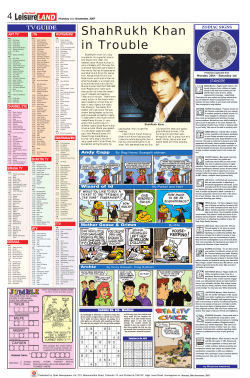
The Mongol Conquests 12.2
12.2 The Mongol Conquests The Mongolian conquests forever changed Asia and Europe. While the Song dynasty prospered, Northern China also prospered. They were nomads in the ‘Asian Steppe’. Asian Steppes – Belt of dry grassland Western Steppe Central Asia to Europe Home of the Hittites and the Aryans. Eastern Steppe Mongolia (Northern China) Home of the Huns, Turks, and Mongols Asian Steppe Dry grassland Very little rainfall Dry, windy Winter weather is -57 degrees and 96 degrees during the summer Tribes typically migrated westward and southward to have access to better rainfall. Boundaries Never any clear boundaries. The boundaries usually lay where the Chinese began cultivating fields. The Chinese kept pushing the boundaries northward to extend field cultivation. Nomads The people of the Eastern Steppe were pastoralists – they herded animals. They were constantly on the move, searching for good pasture to feed their herds. These nomads followed a seasonal pattern and returned on a regular basis to the same campsites. Battles frequently rose between nomadic groups over grassland and water rights. Since they were herders, they depended on the animals for food, clothing, and housing. Clothing made of skins and wool Lived in portable tents called, yurts. Their diet consisted of meat and milk. Mongolian Yurts They lived together as clans. Usually, everyone within the same clan are related. Sometimes different clans banded together to attack or raid nearby campsites. Over time, nearby settlements lived in constant danger of raids. The Chinese built and rebuilt the ‘Great Wall’ to keep these nomadic tribes out. Genghis Khan Khan is the name for clan leader. Temujin wanted to unify the clans under his leadership. He defeated his rivals one by one. In the year 1201, he changed his name to Genghis Khan, which means “Universal Ruler” of the Mongol clans. Genghis launched a campaign of terror across Asia. Over the next 21 years, Genghis led the Mongols in conquering Asia. The Mongols destroyed one city after another and slaughtered many people. By 1221, Central Asia was under Mongolian control. Genghis Khan Genghis Quote “Man’s greatest good fortune is to chase and defeat his enemy, seize his total possessions, leave his married women weeping and wailing, and ride his horse…” Genghis the conqueror Extremely organized Gifted military strategist Used new technology Extremely cruel Organizer Grouped his warriors in armies of 10.000 men The armies were organized into 1,000 man brigades. These were organized into 100 man companies. These were organized into 10 man platoons. Strategist Sent in a small cavalry unit to attack, and then pretend to gallop away in flight. The enemy usually chased the small cavalry unit. The cavalry unit would led them to the rest of the Mongolian army. The Mongolian army would slaughter the enemy forces. Another strategy was to make the Mongol army seem bigger than it really was. He did this my dressing up prisoners or lifelike dummies as Mongol warriors. Genghis also used spies to find out enemy weaknesses. Weapons Genghis adopted new weapons and technologies used by his enemies. Captured Chinese engineers to build catapults and create gunpowder charges. Then he used those weapons to conquer Chinese cities. Cruelty Genghis Khan used cruelty as a weapon. He believed in terrifying his enemy into surrender. If a city refused to open its gates to him, he might kill the entire population when he finally captured the place. The stories of their terror spread quickly so that many towns surrendered without a fight. One historian wrote, “In the countries that have not yet been overrun by them, everyone spends the night afraid that they may appear there too.” Genghis Khan died in 1227 from an illness. People suspect it was pneumonia, but no one is certain. His burial site is unknown. His successors continued to expand the empire. In less than 50 years after his death, the Mongols conquered territory from China to Poland. It became the largest, unified land empire in history. http://www.youtube.com/watch?v=_UnHC M6Zw8E&feature=related Mongolian Empire Ogadai (Genghis’ son) Led the Mongol empire after Genghis’ death. Conquered Northern China and Korea. Took the Russian city of Kiev, and reached the banks of the Adriatic Sea. They almost took Venice and Vienna, but Ogadai died in 1241. Empire divides into 4 Khanates Each khanate was ruled by a descendant of Genghis Khan. Khanate of the Great Khan (Mongolia and China) Khanate of Chagatai (Central Asia) Ilkhanate (Persia) Khanate of the Golden Horde (Russia) Kublai Khan, a grandson of Genghis, named himself the Great Khan in 1260. The 4 Khanates Golden Horde Great Khanate Chagatai Ilkhanate Kublai Kahn Mongols as rulers Many of the destroyed cities were unable to rebuild due to the damage. The Mongols destroyed ancient irrigation systems in the Tigris and Euphrates rive valleys. Over time, some Mongol rulers adopted culture of the people they conquered. Some became Muslim Some made use of the Chinese institutions Peace From 1200-1300, the Mongols imposed stability and law across Eurasia. Guaranteed safe passage of trade caravans, travelers, and missionaries from one empire to another. Trade Flourished Ideas and inventions traveled along with trade goods. Gunpowder reached Europe Disease spread – some historians argue that the bubonic plague spread during this time. (also known as the Black Death) 1. Historically, peoples have tended to move west and south across the steppe mainly for reasons having to do with terrain climate waterways technology _______ 2. A pastoralist makes a living by fighting growing food trading goods herding animals ______ 3. Membership in a Mongol clan was determined by the members’ claim of a common khanate religion ancestor way of life ______ 4. Immediately following the death of Genghis Khan, the Mongol Empire was weakened by foreign invasions peacefully divided into four khanates fragmented by conflict among rival khans expanded into other areas of Asia by his son, Ogadai ______ 5. All of the following modern-day states were once part of the Mongol Empire EXCEPT India Russia South Korea North Korea _____ Assignment On the bottom of your note sheet, create an obituary for Genghis Kahn- include his accomplishments, and what you think he will most remembered for. Use your book for information about Genghis Kahn. An obituary is what the newspaper publishes about a person when they pass away- a general description of their life and successes.
© Copyright 2025












